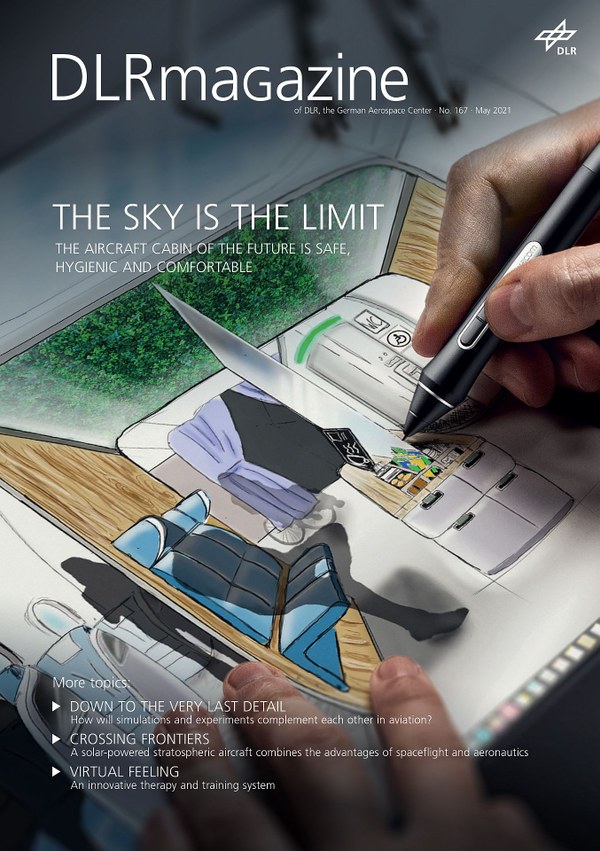His ideas continue to influence modern research
Hermann Ludwig Ferdinand von Helmholtz was one of the last great polymaths – a master of mathematics, physics, chemistry, medicine, psychology, music and philosophy. Not only did he achieve a number of major scientific breakthroughs, but various medical devices are also based on his ingenious ideas. Like its namesake, the modern Helmholtz Association of German Research Centres, to which DLR belongs, is active in many different fields of research.
Hermann von Helmholtz was born in Potsdam in 1821 and received his doctorate in Medicine in Berlin in 1842. In 1848, he was granted a physiology professorship in Berlin, followed by another at the University of Königsberg just one year later. He taught at the University of Bonn from 1855 and later held the first Chair of Physiology at the University of Heidelberg. In 1870, he was offered a professorship in physics in Berlin as a result of his previous work in physics. Helmholtz was awarded the title of nobility in 1883. He was a member of various academies, including the Royal Society of Edinburgh and the Bavarian Academy of Sciences. His approach of combining different disciplines and integrating theory, experimentation and practical application made Hermann von Helmholtz a true pioneer of modern science. Many of his concepts and ideas proved to be pivotal even after his time. At DLR, scientists still use his findings, ideas and developments in various research areas today.
Exploring the world with sensor eyes

Hermann von Helmholtz studied spatial vision and perception in depth. DLR continues to make use of his findings in fields such as robotics and space research. The robot Rollin’ Justin, developed by the DLR Institute of Robotics and Mechatronics in Oberpfaffenhofen, is equipped with many different cameras that enable him to carry out coordinated movements in three dimensions. Stereo cameras are also very important in space. The European Space Agency’s (ESA) Mars Express spacecraft has been orbiting our planetary neighbour for 18 years. On board is the High Resolution Stereo Camera (HRSC) developed by the DLR Institute of Planetary Research in Berlin, which acquires impressive images of the Red Planet. The data it collects are used to create high-resolution digital terrain models for topographical mapping and to answer scientific questions.
Ophthalmology in microgravity conditions

Among Hermann von Helmholtz’s most famous inventions are his medical devices, particularly the ophthalmoscope, which is used to view the retina. He also designed the ophthalmometer, which is used to determine the curvature of the cornea.
Today, the DLR Institute of Aerospace Medicine in Cologne is investigating the effects of microgravity conditions on visual acuity. At the Institute’s medical research building, :envihab, DLR is testing various treat ments for reducing these effects on behalf of NASA. For 30 days, the participants will lie with their heads tilted downwards by six degrees and complete a wide variety of tests.
The secrets of glaciers

Helmholtz was particularly interested in meteorology. He carried out mathematical studies of hurricanes, thunderstorms, air and water waves and extensively investigated the causes of glacier move ments. Today, DLR also conducts research into areas of meteorological interest using resources such as specially equipped atmospheric and Earth observation research aircraft like HALO. DLR also operates a number of Earth observation satellites, such as the two radar satel lites TerraSAR-X and TanDEM-X, which have been in operation since 2007 and 2010 respectively. In 2019, DLR contributed to improve ments in glacier development forecasting with its development of a new technique to analyse TanDEM-X data.
Energy conservation in a wind tunnel

The first law of thermodynamics states that energy in a closed system is always conserved. It was first formulated in 1842 by Julius Robert von Mayer and refined in 1847 by Hermann von Helmholtz. According to this law, energy can neither be created nor destroyed, but only converted from one form to another. This physical principle plays an important role in the construction of wind tunnels. Ludwig Prandtl, the founder of the Aerodynamics Research Institute (Aero dynamische Versuchsanstalt; AVA), a precursor of DLR, developed the Göttingen wind tunnel, a structure distinguished by its closed flow circuit. Previously, wind tunnels had been open systems where the wind was blown out into the open after passing through the test section. Most of the expended operating power was converted into heat and lost. In a closed flow circuit, by contrast, this energy is retained and the drive motor only has to compensate for smaller, unavoidable energy losses as a result of friction. Large wind tunnels are technically feasible thanks to this invention. Now, they are indispensable for testing aircraft, cars, rockets and trains. DLR and its subsidiary the German-Dutch Wind Tunnels (DNW) jointly operate a wide array of wind tunnels for research purposes.


